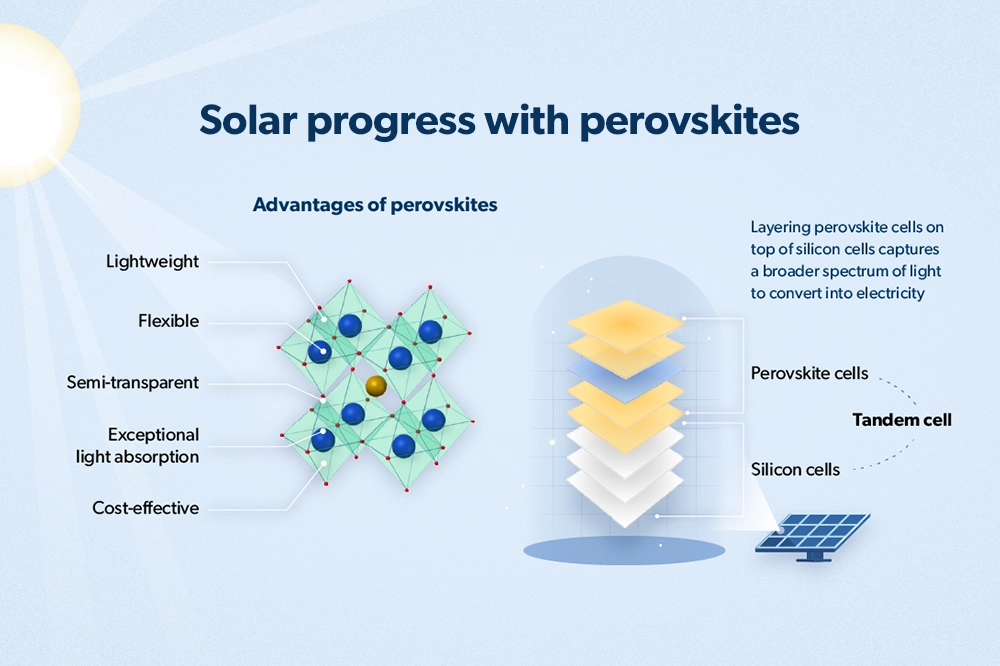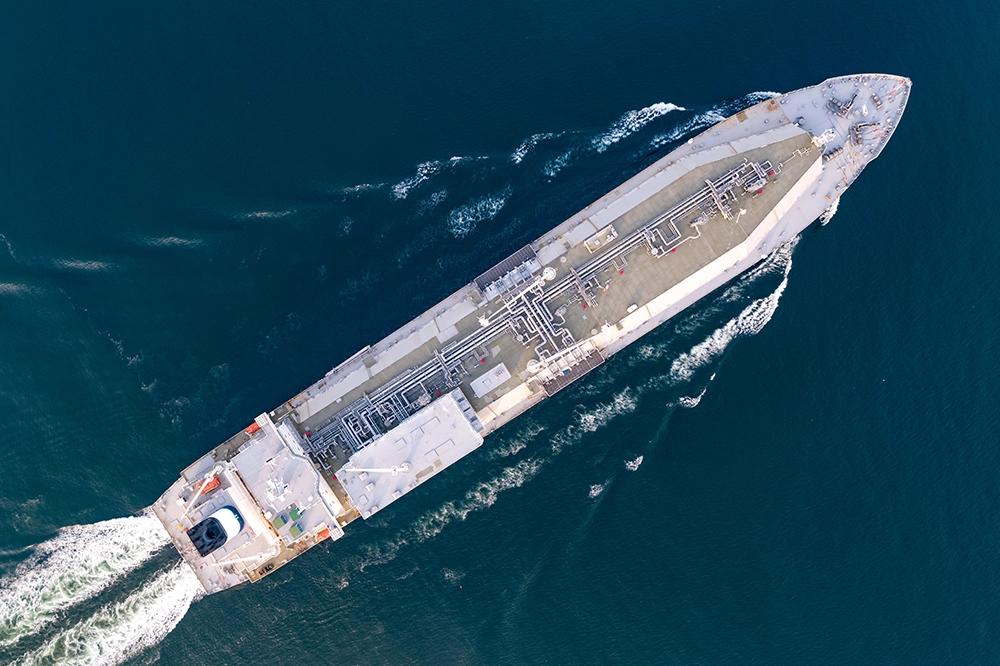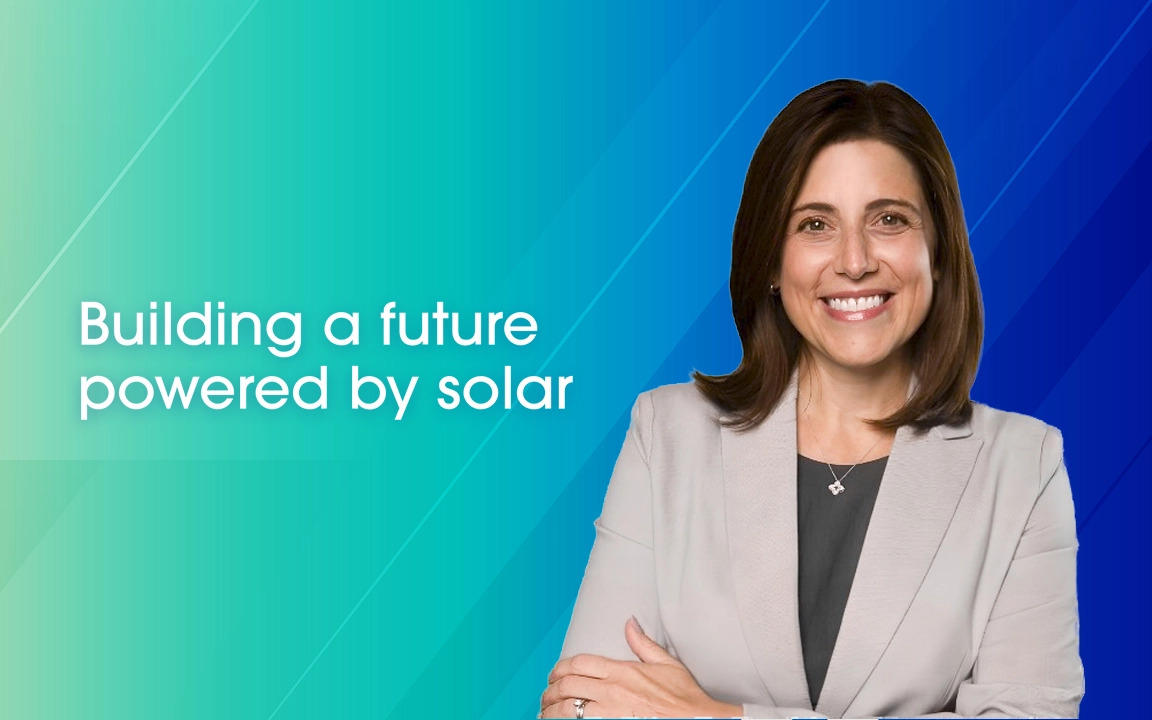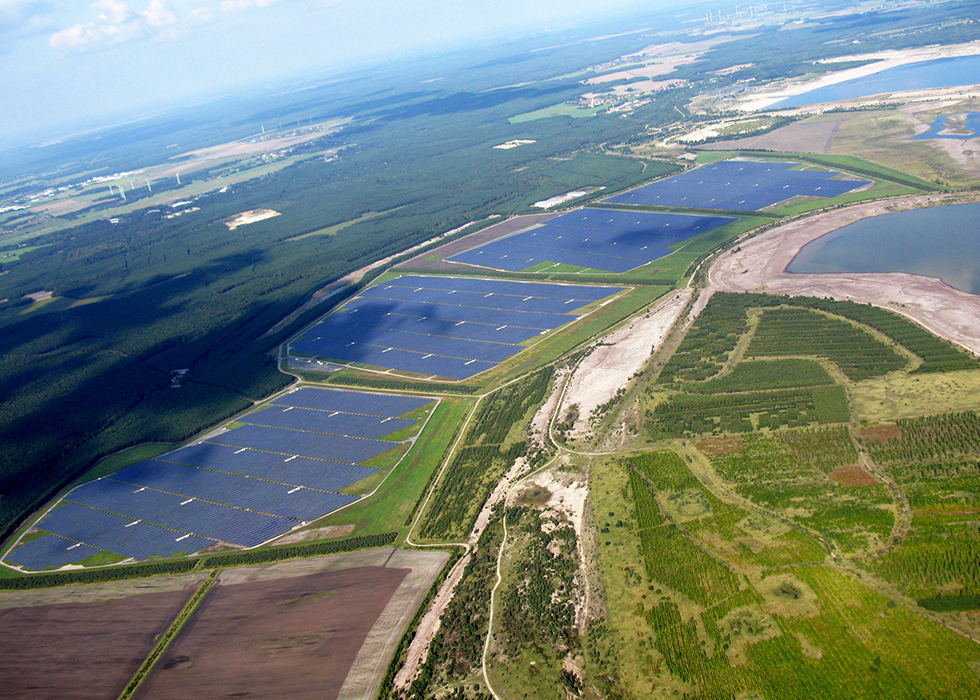5 innovations taking us closer to net zero

As global temperatures rise and extreme weather events intensify, the stakes for global climate action have never been higher. According to the UN Environment Programme’s latest Emissions Gap report, much more needs to be done — without stronger commitments to cut emissions, current policies could drive global temperatures up by 2.6-3.1°C by the end of the century, well above the 1.5°C threshold critical to avoiding the worst impacts of climate change.
To increase the likelihood of meeting net zero targets set for 2050, world leaders are tasked with increasing climate finance and scaling climate technologies. Building on pledges made at COP28 to triple renewable energy capacity by 2030, COP29 will focus on setting a new climate financial goal that surpasses the previous $100 billion target set in 2009, while also advancing key initiatives around adaptation, mitigation, and the deployment of critical technologies like energy storage and hydrogen.
While existing technologies are vital to reducing emissions, achieving net zero will also require both scaling current solutions and advancing innovations that are still in development. The International Energy Agency (IEA) estimates that 35% of the CO2 emissions reductions needed by 2050 will come from technologies that are still in development and thus have not reached markets at commercial scale. This includes advancements in areas like carbon capture and storage, battery technologies, and other solutions that have yet to reach their potential. Below are five promising innovations that can significantly contribute to the push toward net zero emissions.
Perovskite tandem cells: Boosting solar efficiency

Solar energy is a cornerstone of global renewable energy growth, with solar PV projected to account for 80% of new renewable capacity by 2030. However, to meet net zero targets, improving solar panel efficiency is just as crucial as increasing their adoption. Perovskite tandem cells have the potential to be a game changer in this regard.
Perovskite tandem cells are a next generation solar technology that builds on conventional silicon-based cells by adding a layer of perovskite — a photoactive crystal structure that absorbs light and converts it into electricity. By adding this extra layer, these cells capture more energy from a broader spectrum of sunlight, increasing the overall energy output of each solar panel. This improvement in efficiency allows more energy to be generated from the same amount of space, helping to scale up renewable energy capacity without requiring more land to be used.
Hanwha Qcells is at the forefront of commercializing perovskite tandem cells, aiming to significantly improve solar efficiency. Additionally, with an integrated solar supply chain in the United States, Qcells is well positioned to streamline production. The company conducts research and development using real-life solar cells, as opposed to smaller test cells, to ensure the technology performs under real-world conditions. Once widely available, these advanced cells will help drive the growth of solar energy and accelerate the transition to renewable energy.
Energy storage systems: Securing renewable energy

Hanwha Qcells' energy storage systems in San Diego, CA, U.S.
As the world moves toward electrification, efficient energy storage systems (ESS) are essential for stabilizing energy grids and ensuring a reliable power supply. Unlike traditional power plants, which can generate power on demand, solar and wind energy are intermittent — only produced when the sun shines or the wind blows. ESS helps balance supply and demand by capturing excess energy during periods of high production and releasing it when needed, boosting grid resilience.
Innovations in ESS are key to making these systems safer, more efficient, and scalable. However, despite the important role of energy storage, the imbalance in investment is stark: for every dollar spent on renewable power, only 60 cents is allocated to energy storage, according to the IEA's World Energy Outlook 2024. To address this gap, COP29 leaders are advocating for a sixfold increase in energy storage capacity from 2022 levels by 2030, which is crucial for stabilizing renewable energy output and reducing reliance on fossil fuels.
To meet net zero targets and ensure energy security, an increase in ESS capacity is imperative. Hanwha Qcells has developed advanced ESS products that optimize solar energy usage, enabling end users to manage their energy consumption more efficiently.
Additionally, Hanwha Aerospace, in collaboration with SK Enmove, has developed immersion cooling ESS technology that significantly improves safety. Given the diverse and sometimes harsh environments where these systems are deployed, Hanwha has focused on reducing fire hazards and protecting against environmental damage from dust and salt, which are common risks in coastal and storm-prone areas. These advancements are key to ensuring the stability and reliability of energy storage systems in the field.
AI: Optimizing energy grids

Efficient energy management is increasingly critical across all energy systems as it helps to reduce emissions and ensures optimal use of resources. Artificial intelligence (AI) is transforming energy systems through applications such as solar generation forecasting, predictive maintenance, and grid stabilization. These innovations have already been shown to improve operational speed and reliability.
While AI-powered systems consume energy themselves, recent analysis from the IEA suggests that overall demand for electricity due to AI might not be as significant as previously anticipated. Benefits, such as the ability to streamline energy management, help offset its impact.
As a market leader in solar manufacturing, Hanwha Qcells is uniquely positioned to implement AI-integrated innovations such as distributed energy systems (DES) and virtual power plants (VPPs) on a large scale. By applying these advanced technologies, Hanwha Qcells can enhance efficiency across the entire solar value chain, from manufacturing and grid integration to consumer adoption.
Green shipping: Charting a sustainable course

Shipping accounts for approximately 3% of global emissions and remains one of the most challenging sectors to decarbonize. Without further action, these emissions could rise to 10% of global greenhouse gas output by 2050, making it critical to accelerate innovations that push the maritime sector toward sustainability. A range of green shipping technologies, from alternative fuels and propulsion systems to energy efficiency measures, is essential to cutting emissions and achieving net zero goals.
Hanwha is at the forefront of this transformation, with a comprehensive roadmap for carbon free shipping. This initiative represents a collaborative effort among multiple companies within Hanwha Group, including Hanwha Ocean, Hanwha Power Systems, and Hanwha Engine.
A significant goal of this collaboration is building zero-carbon ships. Hanwha Power Systems is developing ammonia gas turbines, a promising solution for clean propulsion. While Hanwha Ocean is exploring how to integrate these turbines into vessels, advancing the transition to carbon free shipping. Additionally, hydrogen fuel cells are a key part of Hanwha’s vision for fossil-free shipping. Hanwha Aerospace’s hydrogen fuel cells recently received Approval in Principle (AiP) from the Korean Register of Shipping, validating the safety of its fuel cells for maritime use.
Alongside these technologies, Hanwha is implementing various other carbon reduction solutions. Hanwha Engine, for example, is retrofitting existing ships with dual fuel engines that use a mixture of conventional and alternative fuels such as ammonia and methanol, reducing carbon emissions. Additionally, Hanwha Ocean is developing rotor sails, which have been certified by DNV. While still in the early stages of adoption, these sails harness wind power to reduce both fuel consumption and emissions.
With these cutting-edge technologies, Hanwha is driving the maritime sector toward a more sustainable future, positioning itself as a key player in the global effort to decarbonize shipping.
Direct air capture: Tackling legacy emissions

Direct air capture (DAC) is an emerging technology aimed at removing carbon already present in the atmosphere. To achieve net zero, up to 10 billion tons of CO2 will need to be removed from the atmosphere annually and DAC has potential in this regard as it offers scalable, permanent, and verifiable CO2 removal of legacy emissions. DAC works by extracting CO2 directly from the air, which can then be stored underground in geological formations or repurposed for industrial applications, such as producing synthetic fuels or concrete.
In addition to DAC, other carbon capture and storage solutions play a vital role in reducing emissions across various sectors. Traditionally used in industrial settings, these technologies are now being adapted for transport, including maritime applications. Onboard carbon capture and storage (OCCS) is a promising innovation for reducing emissions in the shipping industry. Integrated within a vessel’s fuel system, OCCS captures CO2 produced during fuel combustion, preventing it from being released into the atmosphere. Hanwha Ocean is retrofitting ships with OCCS to significantly reduce carbon emissions from maritime operations.
Together, DAC and OCCS provide valuable solutions for offsetting emissions in hard-to-decarbonize sectors like aviation, shipping, and heavy industry. However, while DAC has potential, it is not yet widely adopted due to high costs and its energy-intensive nature. At $600-$1,000 per ton of CO2, large scale deployment is economically challenging, meaning that there are currently only 27 facilities in operation worldwide. Despite this, ongoing advancements are expected to lower costs and increase capacity, meaning that DAC is seen as a potential technology for bridging the gap where direct emissions reductions are difficult, helping to neutralize emissions in the global push toward net zero.
Achieving global net zero goals by 2050 will require a broad range of technologies and innovations, many of which are still being developed. Continued investment in areas like solar efficiency, energy storage, AI-driven energy management, green shipping, and direct air capture is essential for meeting these ambitious targets. No single solution will suffice — only through coordinated efforts across industries and nations can we build a sustainable, carbon neutral future and effectively combat the climate crisis.
Get the latest news about Hanwha, right in your inbox.
Fields marked with * are mandatory.
- Non-employee
- Employee










